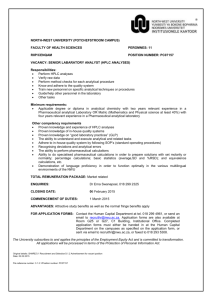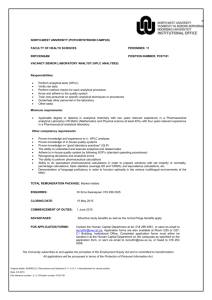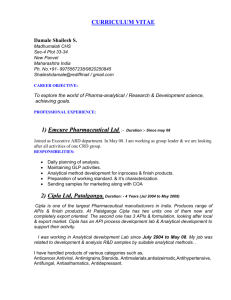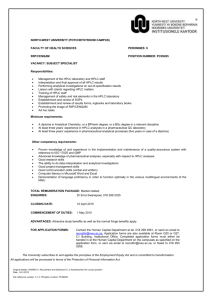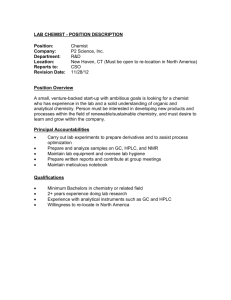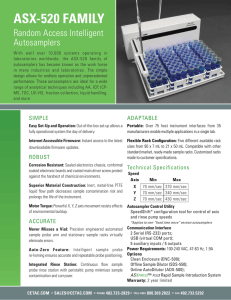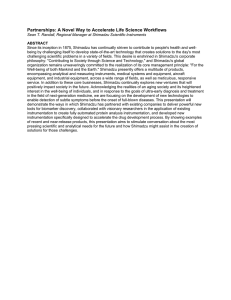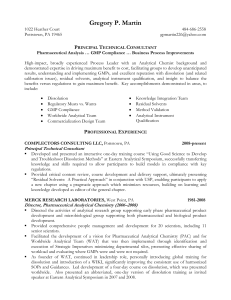quantitative-determ
advertisement
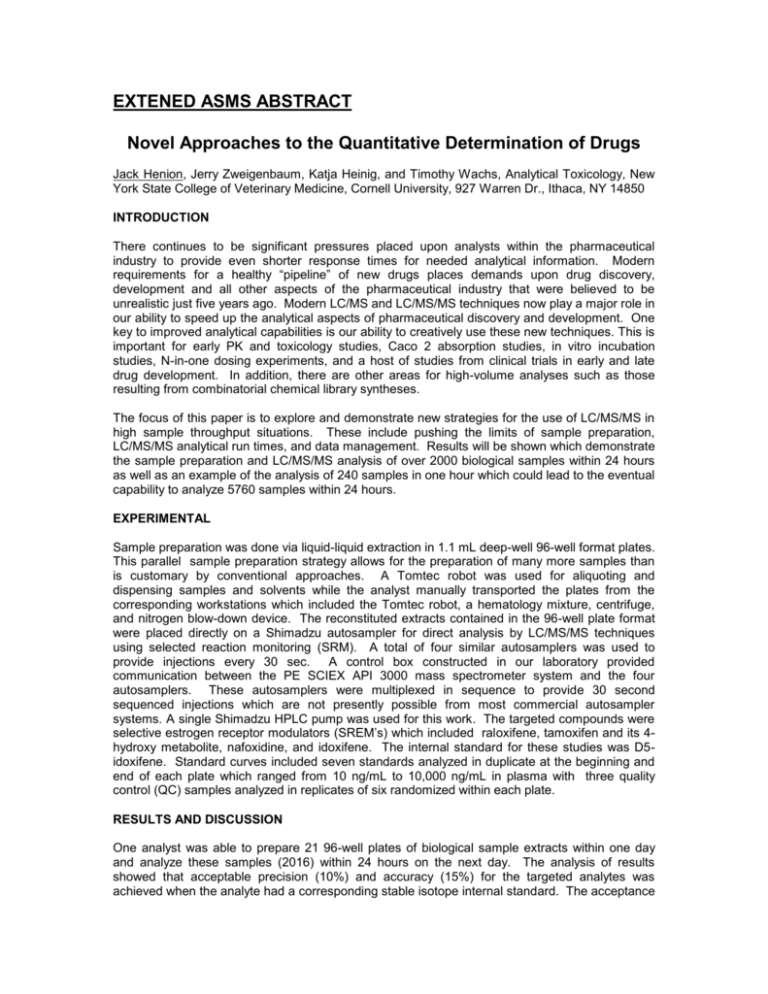
EXTENED ASMS ABSTRACT Novel Approaches to the Quantitative Determination of Drugs Jack Henion, Jerry Zweigenbaum, Katja Heinig, and Timothy Wachs, Analytical Toxicology, New York State College of Veterinary Medicine, Cornell University, 927 Warren Dr., Ithaca, NY 14850 INTRODUCTION There continues to be significant pressures placed upon analysts within the pharmaceutical industry to provide even shorter response times for needed analytical information. Modern requirements for a healthy “pipeline” of new drugs places demands upon drug discovery, development and all other aspects of the pharmaceutical industry that were believed to be unrealistic just five years ago. Modern LC/MS and LC/MS/MS techniques now play a major role in our ability to speed up the analytical aspects of pharmaceutical discovery and development. One key to improved analytical capabilities is our ability to creatively use these new techniques. This is important for early PK and toxicology studies, Caco 2 absorption studies, in vitro incubation studies, N-in-one dosing experiments, and a host of studies from clinical trials in early and late drug development. In addition, there are other areas for high-volume analyses such as those resulting from combinatorial chemical library syntheses. The focus of this paper is to explore and demonstrate new strategies for the use of LC/MS/MS in high sample throughput situations. These include pushing the limits of sample preparation, LC/MS/MS analytical run times, and data management. Results will be shown which demonstrate the sample preparation and LC/MS/MS analysis of over 2000 biological samples within 24 hours as well as an example of the analysis of 240 samples in one hour which could lead to the eventual capability to analyze 5760 samples within 24 hours. EXPERIMENTAL Sample preparation was done via liquid-liquid extraction in 1.1 mL deep-well 96-well format plates. This parallel sample preparation strategy allows for the preparation of many more samples than is customary by conventional approaches. A Tomtec robot was used for aliquoting and dispensing samples and solvents while the analyst manually transported the plates from the corresponding workstations which included the Tomtec robot, a hematology mixture, centrifuge, and nitrogen blow-down device. The reconstituted extracts contained in the 96-well plate format were placed directly on a Shimadzu autosampler for direct analysis by LC/MS/MS techniques using selected reaction monitoring (SRM). A total of four similar autosamplers was used to provide injections every 30 sec. A control box constructed in our laboratory provided communication between the PE SCIEX API 3000 mass spectrometer system and the four autosamplers. These autosamplers were multiplexed in sequence to provide 30 second sequenced injections which are not presently possible from most commercial autosampler systems. A single Shimadzu HPLC pump was used for this work. The targeted compounds were selective estrogen receptor modulators (SREM’s) which included raloxifene, tamoxifen and its 4hydroxy metabolite, nafoxidine, and idoxifene. The internal standard for these studies was D5idoxifene. Standard curves included seven standards analyzed in duplicate at the beginning and end of each plate which ranged from 10 ng/mL to 10,000 ng/mL in plasma with three quality control (QC) samples analyzed in replicates of six randomized within each plate. RESULTS AND DISCUSSION One analyst was able to prepare 21 96-well plates of biological sample extracts within one day and analyze these samples (2016) within 24 hours on the next day. The analysis of results showed that acceptable precision (10%) and accuracy (15%) for the targeted analytes was achieved when the analyte had a corresponding stable isotope internal standard. The acceptance criteria could be met for compounds eluting near the internal standard, but not for those with retention times distant from the internal standard. The system performance was acceptable throughout the entire 24-hour period. Thus chromatographic performance and system sensitivity were maintained through the run while HPLC column pressures remained within acceptable tolerances. These results significantly improve the current sample analysis throughput of bioanalytical LC/MS/MS capabilities and suggest that even higher sample throughput capabilities may be possible in the future. ACKNOWLEDGMENTS We thank PE SCIEX for the generous loan of the API 3000 mass spectrometer system and SmithKline Beecham for a generous supply of Idoxifine and its stable isotope internal standard. JZ thanks the Eastman Kodak Company for support of his studies at Cornell. Figure 1. SRM LC/MS Chromatogram of SERMs showing reproducibility and ruggedness for analysis of over 2000 samples in 24 hours. Compounds are 1) raloxifene, 2) 4-hydroxytamoxifen, 3) nafoxidine, 4) tamoxifen, and 5) idoxifene.

